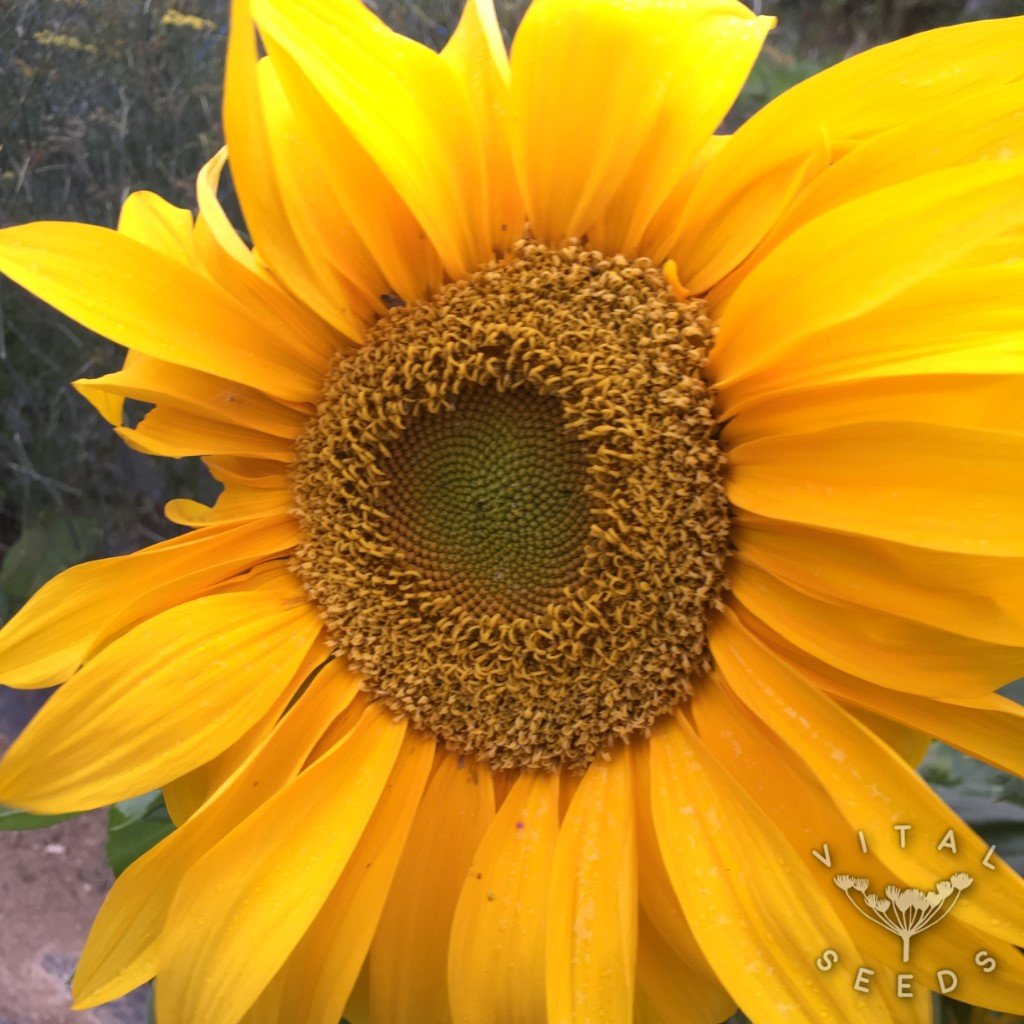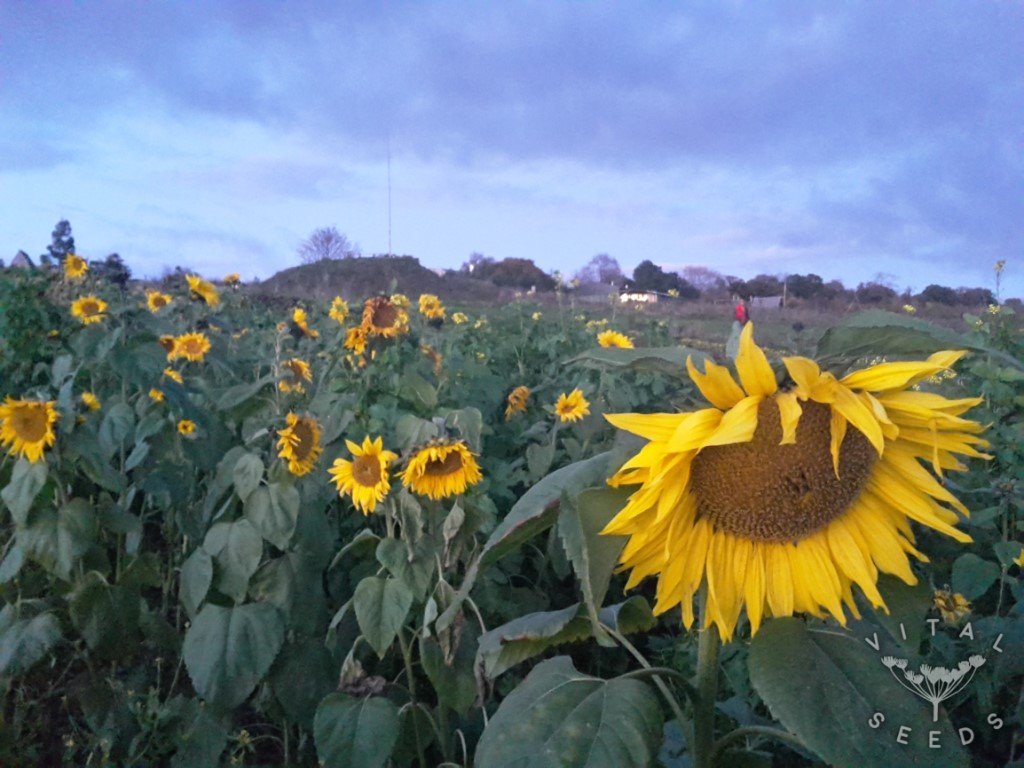When to sow: March – June
Spacing: 40 x 40cm
Sunflower tips: Sow seeds under cover from March in 10cm pots and plant out once the last frost has passed, around mid-May.
Alternatively direct sow from May – June. Early plantings may need covering with fleece to protect from the cold.
Large varieties will need more space than smaller ones.
Seed Sowing
Sunflowers are annuals that can be sown in modules from March to June at a depth of 2cm. Alternatively, you can sow them outdoors in rows 40cm apart from May until June, protecting earlier-sown seeds with fleece.
Transplanting
Ensure your seed bed is free from weeds. Sheltered, sunny sites are best, as sunflowers do not thrive in strong winds or shade—after all, they are called sunflowers for a reason. They prefer moist but well-draining soils, so incorporating organic matter is beneficial. Large varieties will require more space than smaller ones, so keep that in mind when spacing them in your rows. Young plants need to be hardened off before planting.
Plant Care
Keep the area weed-free and watered during hot spells. You can also mulch around the plants to retain moisture and prevent weeds.
Challenges
Sunflowers are generally pest and disease-free. However, young seedlings may need protection from slugs. If they are well-hardened off, they will be less susceptible to attack. Sunflowers dislike cold weather, so if you are in a colder area, sow later for the best results. If you want to harvest the seeds, cover them with a net to prevent birds from eating them (though leaving a few uncovered for the birds is a good idea too).
Harvest
Pick the flower heads for cut flowers when they look good enough for a vase. When they start to droop, it indicates they are forming seeds. If you’re growing them for wildlife benefits, leave them where they are, and let them set seed for the finches. The stems provide good overwintering spots for beneficial insects. See seed saving below for instructions on how to collect the seeds.
Culinary Ideas and Uses
Sunflower seeds for eating are generally grown in large quantities and shelled by machines, as doing it by hand is very time-consuming. Choose a variety with large flowers and large seeds to make it worth the effort. You can roast them in the shell and crack and nibble your way through them.
Seed Saving
Once the seed heads have drooped and turned brown, you can collect the whole heads to dry indoors for a few days. Rub the seeds away from the flower head; the central ones are usually the largest and of the best quality. You can separate seeds from chaff before storing them in a cool, dry place for sowing the following year.


